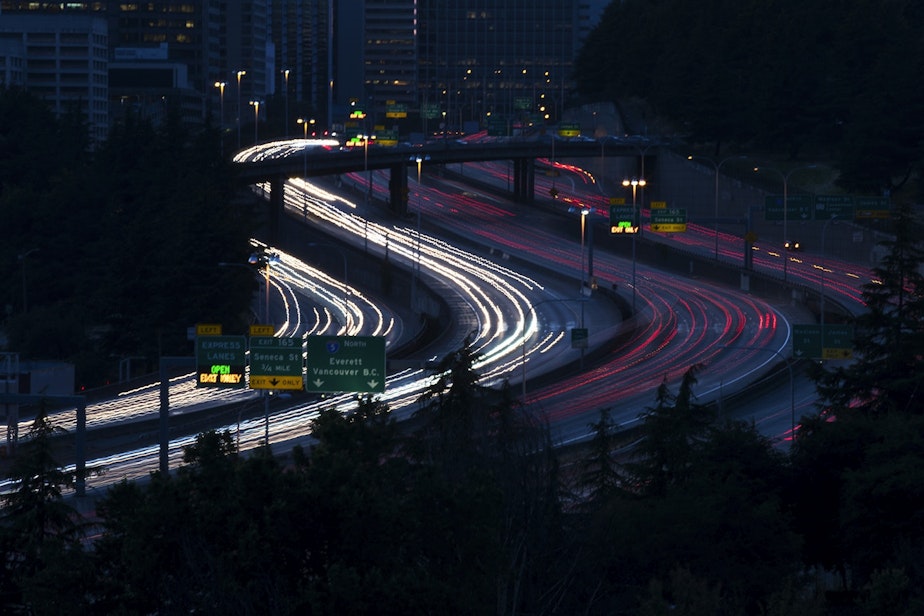Seattle’s carbon emissions keep rising, and city keeps calling itself a climate leader

Despite 17 years of promises to lead the nation in reducing climate-wrecking carbon pollution, Seattle’s emissions continue to increase.
Seattleites did 2.5 percent more harm to the climate in 2016 than they did in 2014, according to the city’s most comprehensive measure of greenhouse gas emissions.
The nearly 6 million tons of carbon dioxide and the various activities that emitted it are detailed in a new report from the Seattle Office of Sustainability and Environment.
0222seattlecarbonwrap
Planes, trucks and automobiles were the biggest culprits. Pollution from passenger vehicles rose 1 percent; from trucks, 3 percent. The biggest increase came from jet exhaust—up 22 percent in two years and 40 percent in four years—as Seattleites’ air travel out of Seattle-Tacoma International Airport shot skyward.
“That’s insane,” climate activist Emily Johnston with the group 350 Seattle said of the sharp increase in emissions from Sea-Tac. “That’s exactly going in the wrong direction, exactly when we can least afford to do so.”

Mayors stretching back to Paul Schell in 2001 have promised, as part of the world's efforts to fend off climate catastrophe, to aggressively reduce pollution here.
Even so, Seattle officials painted the latest worsening numbers as a success of sorts: Our pollution grew more slowly than our population.
“It’s a good story that we can grow our population like we have and keep our transportation emissions close to steady,” said Jessica Finn Coven, head of the sustainability office.
The results leave Seattle falling farther away from its longstanding target to get to zero emissions by 2050.
“The things we have been doing haven’t been enough, and we’re not claiming that they are,” Coven said.
Sponsored
Still, she reiterated the city’s claims of climate leadership with the "bold" policies it has undertaken, like its efficiency-mandating building code.
"We are continuing to be a leader in Seattle," she said. "We will keep that up."
“The reality is that we have some of the lowest per-capita emissions in the U.S., which does make us a leader,” Coven said.
Reliance on carbon-neutral hydropower from the Skagit River has kept Seattle’s carbon emissions down since 1924.
Sponsored
“We’re in a climate emergency,” said Adam Maxwell of Audubon Washington, the environmental group. “To see numbers not only not falling, but ratcheting up a bit, is disappointing, and that’s an understatement.”
“For a city that prides itself on climate leadership, this is failure,” Todd Myers with the libertarian Washington Policy Center said in an email.
Myers also questioned the approach of the report, which showed emissions from cement manufacturing in the city dropping by 27 percent and from steel and glass manufacturing falling by half.
“Why do they count steel produced in the city, but not steel that is more carbon intensive but is produced in China and shipped here?” he asked.
Since taking office in January 2018, Seattle Mayor Jenny Durkan has proposed carbon-saving measures including tolls on downtown traffic and a requirement for all new buildings with parking to include electric-vehicle charging stations.
Sponsored
The Seattle Department of Transportation launched a 9-month congestion pricing study in April that was supposed to have been finished by January.
“There are so many things we could be doing right now, or at least piloting right now, that we’re not doing,” Johnston said. “What we’re not doing is treat it as a crisis.”
Coven said the priority on any congestion pricing scheme is engaging residents beforehand and making sure the city is prioritizing fairness.
Johnston called for launching a pilot downtown tolling system and dedicating all revenue it raised to improving transit, especially in underserved areas.
“There’s only so much a city can do by itself,” Maxwell, the Audubon lobbyist, said.
He said he was optimistic that the state Legislature would pass several laws this year, including a phase-out of electricity made with fossil fuels and a tax break for electric vehicles, that would make it easier for cities like Seattle to live up to their climate promises.




